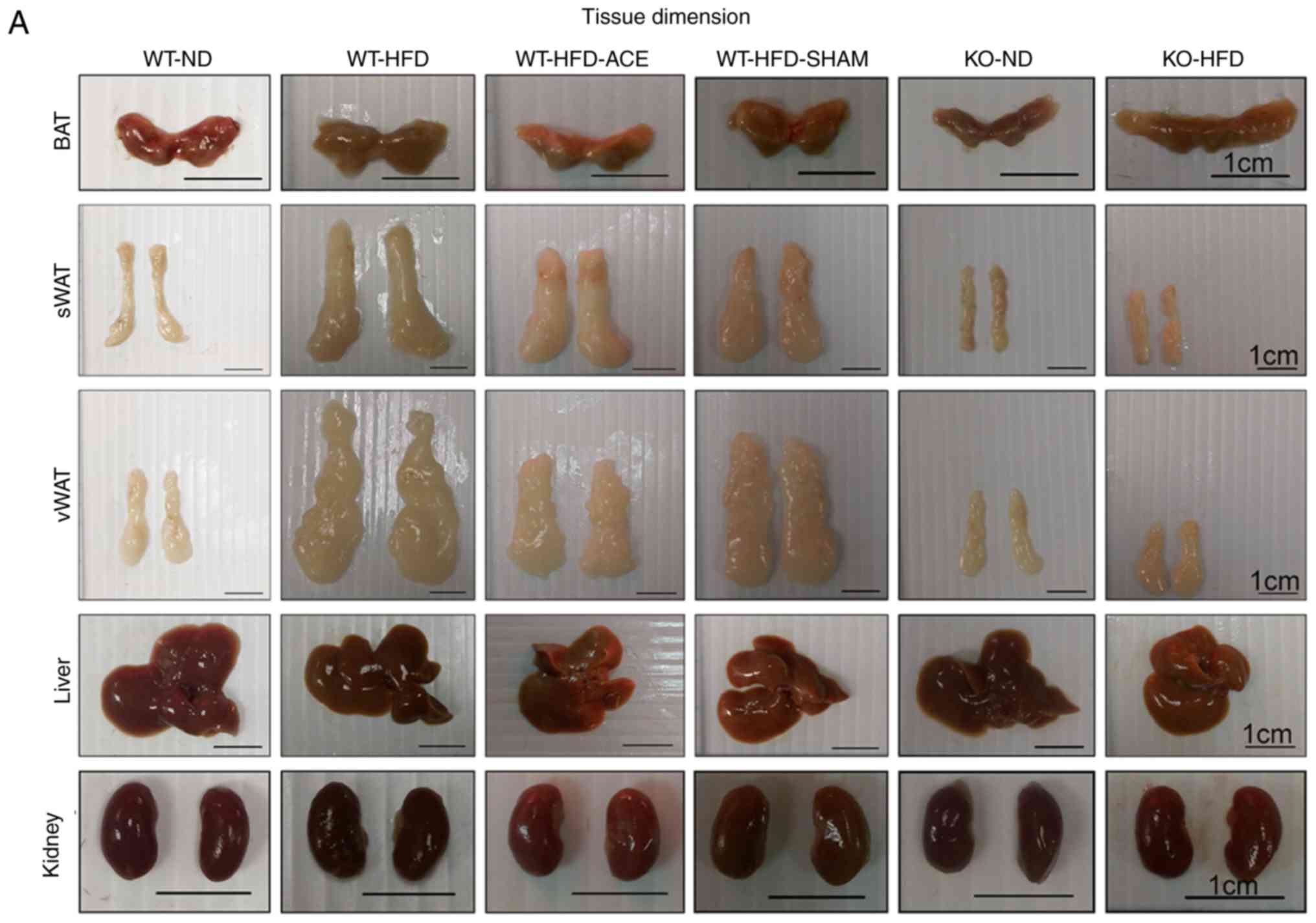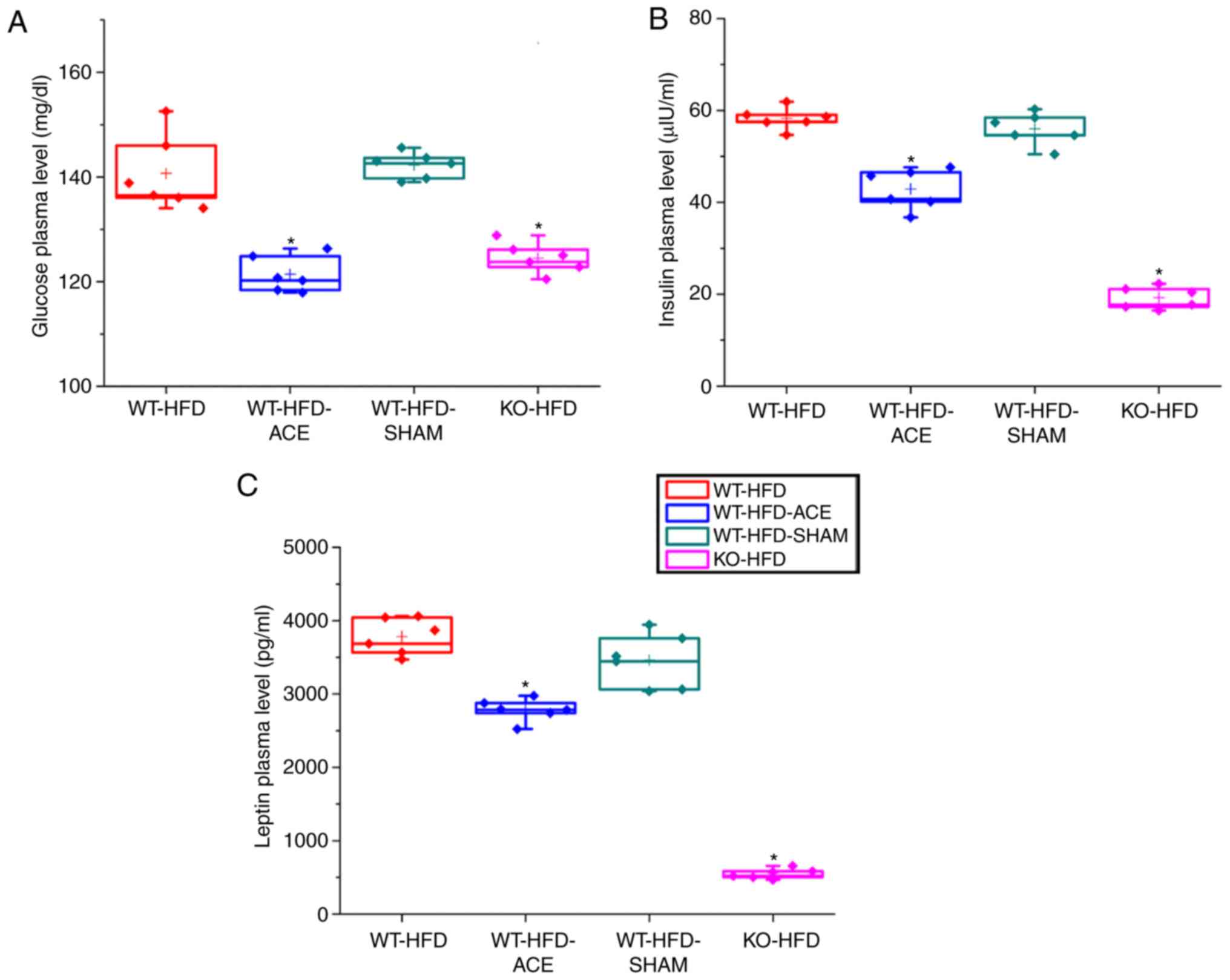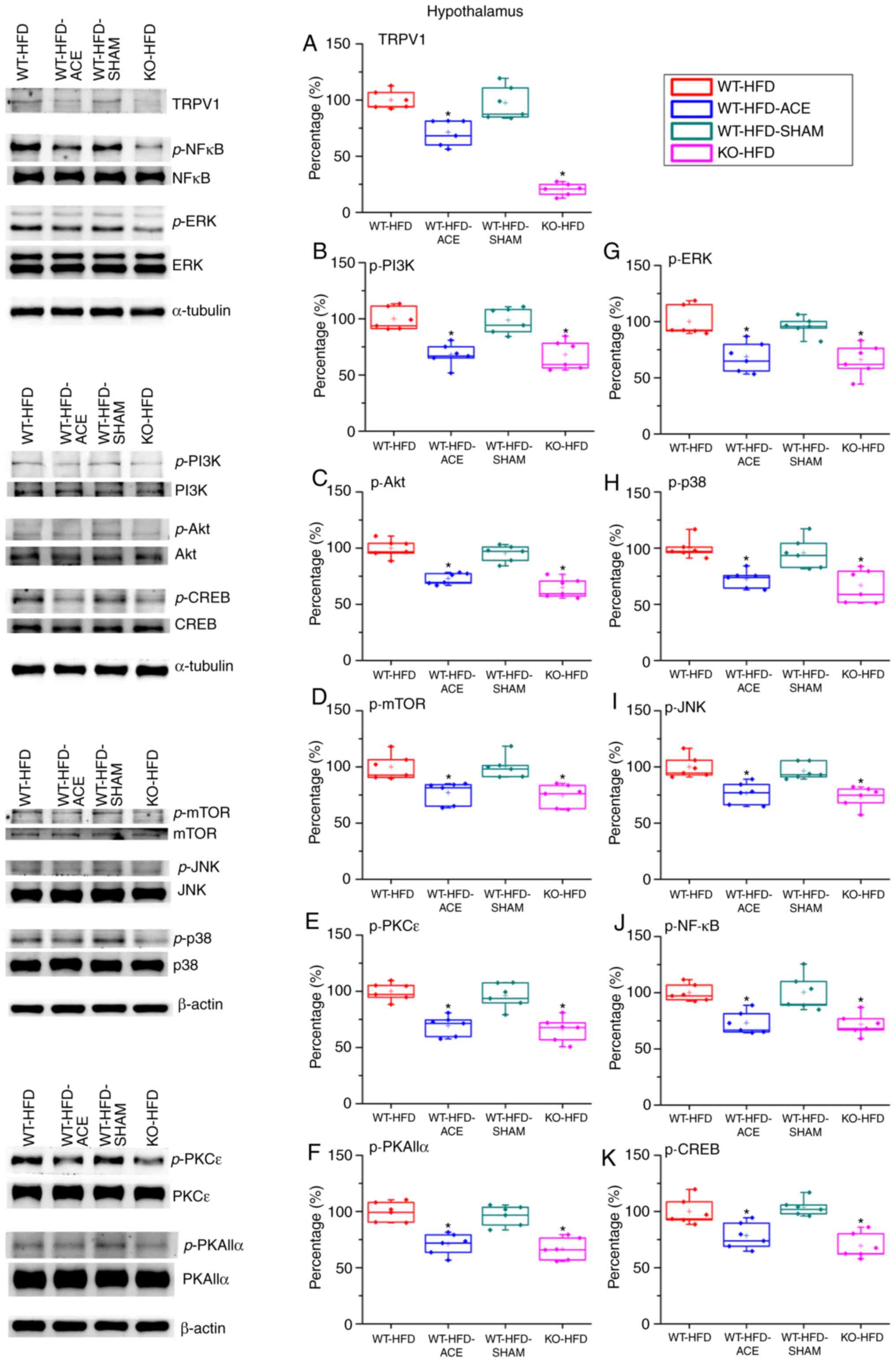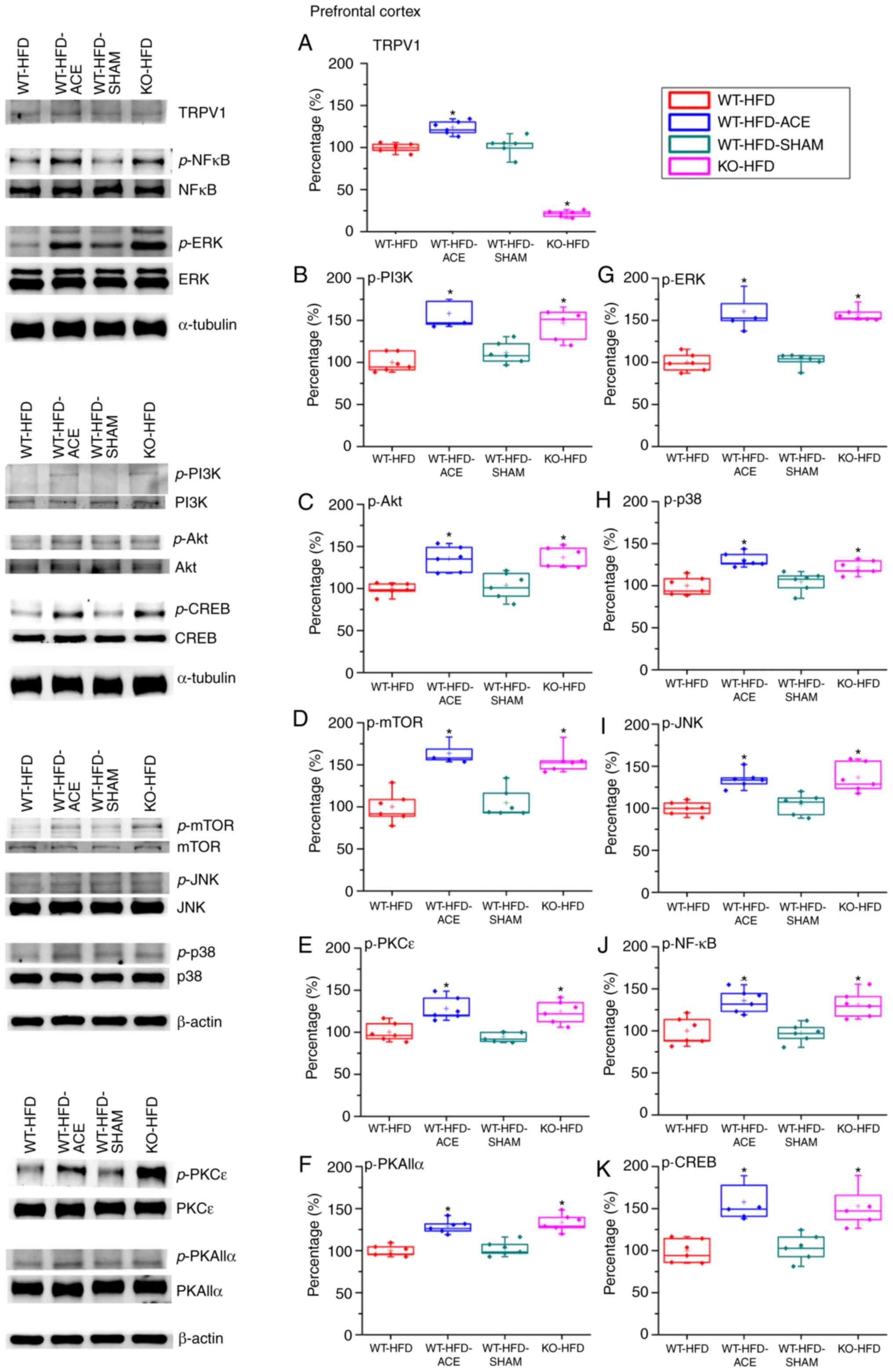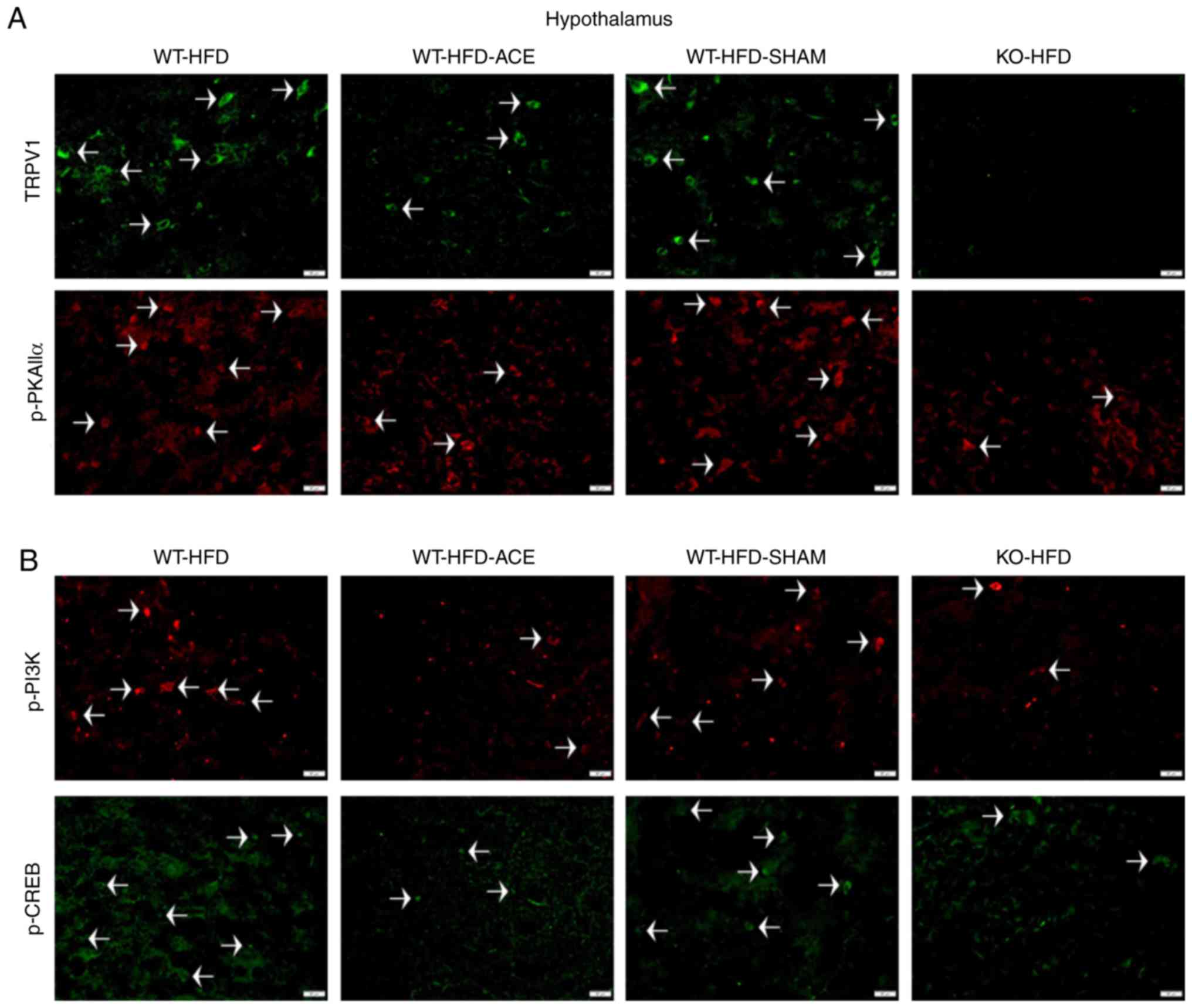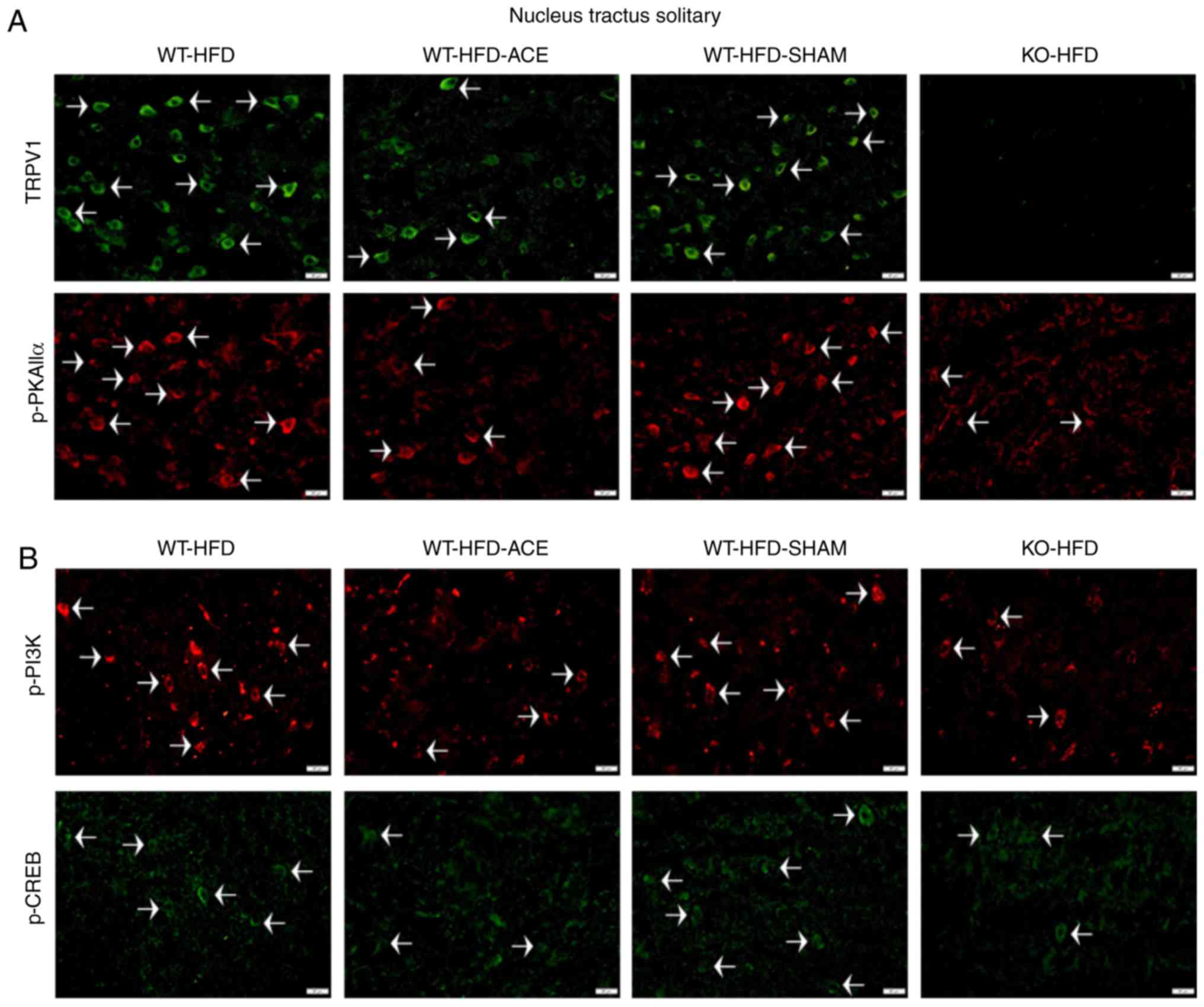|
1
|
GBD 2015 Obesity Collaborators; Afshin A,
Forouzanfar MH, Reitsma MB, Sur P, Estep K, Lee A, Marczak L,
Mokdad AH, Moradi-Lakeh M, et al: Health effects of overweight and
obesity in 195 countries over 25 years. N Engl J Med. 377:13–27.
2017. View Article : Google Scholar : PubMed/NCBI
|
|
2
|
Cho SH, Lee JS, Thabane L and Lee J:
Acupuncture for obesity: A systematic review and meta-analysis. Int
J Obes (Lond). 33:183–196. 2009. View Article : Google Scholar
|
|
3
|
Thaler JP, Guyenet SJ, Dorfman MD, Wisse
BE and Schwartz MW: Hypothalamic inflammation: Marker or mechanism
of obesity pathogenesis? Diabetes. 62:2629–2634. 2013. View Article : Google Scholar : PubMed/NCBI
|
|
4
|
Coveleskie K, Kilpatrick LA, Gupta A,
Stains J, Connolly L, Labus JS, Sanmiguel C and Mayer EA: The
effect of the GLP-1 analogue Exenatide on functional connectivity
within an NTS-based network in women with and without obesity. Obes
Sci Pract. 3:434–445. 2017. View
Article : Google Scholar : PubMed/NCBI
|
|
5
|
Lockie SH: Glucagon-like peptide-1
receptor in the brain: Role in neuroendocrine control of energy
metabolism and treatment target for obesity. J Neuroendocrinol.
25:597–604. 2013. View Article : Google Scholar : PubMed/NCBI
|
|
6
|
Sobrino Crespo C, Perianes Cachero A,
Puebla Jiménez L, Barrios V and Arilla Ferreiro E: Peptides and
food intake. Front Endocrinol (Lausanne). 5:582014. View Article : Google Scholar
|
|
7
|
Valassi E, Scacchi M and Cavagnini F:
Neuroendocrine control of food intake. Nutr Metab Cardiovasc Dis.
18:158–168. 2008. View Article : Google Scholar
|
|
8
|
Baskaran P, Krishnan V, Fettel K, Gao P,
Zhu Z, Ren J and Thyagarajan B: TRPV1 activation counters
diet-induced obesity through sirtuin-1 activation and PRDM-16
deacetylation in brown adipose tissue. Int J Obes (Lond).
41:739–749. 2017. View Article : Google Scholar
|
|
9
|
Yoneshiro T, Aita S, Kawai Y, Iwanaga T
and Saito M: Nonpungent capsaicin analogs (capsinoids) increase
energy expenditure through the activation of brown adipose tissue
in humans. Am J Clin Nutr. 95:845–850. 2012. View Article : Google Scholar : PubMed/NCBI
|
|
10
|
Abdelhamid RE, Kovács KJ, Nunez MG and
Larson AA: Depressive behavior in the forced swim test can be
induced by TRPV1 receptor activity and is dependent on NMDA
receptors. Pharmacol Res. 79:21–27. 2014. View Article : Google Scholar :
|
|
11
|
Li HB, Mao RR, Zhang JC, Yang Y, Cao J and
Xu L: Antistress effect of TRPV1 channel on synaptic plasticity and
spatial memory. Biol Psychiatry. 64:286–292. 2008. View Article : Google Scholar : PubMed/NCBI
|
|
12
|
Ramírez-Barrantes R, Cordova C, Poblete H,
Muñoz P, Marchant I, Wianny F and Olivero P: Perspectives of TRPV1
function on the neurogenesis and neural plasticity. Neural Plast.
2016:15681452016. View Article : Google Scholar : PubMed/NCBI
|
|
13
|
Liu D, Zhu Z and Tepel M: The role of
transient receptor potential channels in metabolic syndrome.
Hypertens Res. 31:1989–1995. 2008. View Article : Google Scholar : PubMed/NCBI
|
|
14
|
Menigoz A and Boudes M: The expression
pattern of TRPV1 in brain. J Neurosci. 31:13025–13027. 2011.
View Article : Google Scholar : PubMed/NCBI
|
|
15
|
Zhang GR, Zhao H, Choi EM, Svestka M, Wang
X, Cook RG and Geller AI: CaMKII, MAPK, and CREB are coactivated in
identified neurons in a neocortical circuit required for performing
visual shape discriminations. Hippocampus. 22:2276–2289. 2012.
View Article : Google Scholar : PubMed/NCBI
|
|
16
|
Brown TE, Chirila AM, Schrank BR and Kauer
JA: Loss of interneuron LTD and attenuated pyramidal cell LTP in
Trpv1 and Trpv3 KO mice. Hippocampus. 23:662–671. 2013. View Article : Google Scholar : PubMed/NCBI
|
|
17
|
Fernandes ES, Fernandes MA and Keeble JE:
The functions of TRPA1 and TRPV1: Moving away from sensory nerves.
Br J Pharmacol. 166:510–521. 2012. View Article : Google Scholar : PubMed/NCBI
|
|
18
|
Nam MH, Lee SW, Na HY, Yoo JH, Paik SH,
Ahn KS, Ahn YM, Ahn SY, Choi SH and Lee BC: Herbal acupuncture for
the treatment of obesity. J Acupunct Meridian Stud. 9:49–57. 2016.
View Article : Google Scholar : PubMed/NCBI
|
|
19
|
Yeh ML, Chu NF, Hsu MY, Hsu CC and Chung
YC: Acupoint stimulation on weight reduction for obesity: A
randomized sham-controlled study. West J Nur Res. 37:1517–1530.
2015. View Article : Google Scholar
|
|
20
|
Kim SY, Shin IS and Park YJ: Effect of
acupuncture and intervention types on weight loss: A systematic
review and meta-analysis. Obes Res. 19:1585–1596. 2018. View Article : Google Scholar
|
|
21
|
Guo T, Ren Y, Kou J, Shi J, Tianxiao S and
Liang F: Acupoint catgut embedding for obesity: Systematic review
and meta-analysis. Evid Based Complement Alternat Med.
2015:4019142015. View Article : Google Scholar : PubMed/NCBI
|
|
22
|
Wu X, Mo Q, He T, Zhi N, Huang Y and Yang
S: Acupoint catgut embedding for the treatment of obesity in
adults: A systematic review protocol. Medicine (Baltimore).
98:e146102019. View Article : Google Scholar
|
|
23
|
Garcia-Vivas JM, Galaviz-Hernandez C,
Fernandez-Retana J, Pedroza-Torres A, Perez-Plasencia C,
Lopez-Camarillo C and Marchat LA: Transcriptomic profiling of
adipose tissue in obese women in response to acupuncture catgut
embedding therapy with moxibustion. J Altern Complement Med.
22:658–668. 2016. View Article : Google Scholar : PubMed/NCBI
|
|
24
|
National Research Council (US) Committee
for the Update of the Guide for the Care and Use of Laboratory
Animals: Guide for the Care and Use of Laboratory Animals. 8th
edition. National Academies Press (US); Washington, DC: 2011
|
|
25
|
Choowanthanapakorn M, Lu KW, Yang J, Hsieh
CL and Lin YW: Targeting TRPV1 for body weight control using
TRPV1(-/-) mice and electroacupuncture. Sci Rep. 5:173662015.
View Article : Google Scholar : PubMed/NCBI
|
|
26
|
Ibrahim MM: Subcutaneous and visceral
adipose tissue: Structural and functional differences. Obes Rev.
11:11–18. 2010. View Article : Google Scholar
|
|
27
|
Towbin H, Staehelin T and Gordon J:
Electrophoretic transfer of proteins from polyacrylamide gels to
nitrocellulose sheets: Procedure and some applications. Proc Natl
Acad Sci USA. 76:4350–4354. 1979. View Article : Google Scholar : PubMed/NCBI
|
|
28
|
Baskaran P, Krishnan V, Ren J and
Thyagarajan B: Capsaicin induces browning of white adipose tissue
and counters obesity by activating TRPV1 channel-dependent
mechanisms. Br J Pharmacol. 173:2369–2389. 2016. View Article : Google Scholar : PubMed/NCBI
|
|
29
|
Saito M, Yoneshiro T and Matsushita M:
Activation and recruitment of brown adipose tissue by cold exposure
and food ingredients in humans. Best Pract Res Clin Endocrinol
Metab. 30:537–547. 2016. View Article : Google Scholar : PubMed/NCBI
|
|
30
|
Zhang LL, Yan Liu D, Ma LQ, Luo ZD, Cao
TB, Zhong J, Yan ZC, Wang LJ, Zhao ZG, Zhu SJ, et al: Activation of
transient receptor potential vanilloid type-1 channel prevents
adipogenesis and obesity. Circ Res. 100:1063–1070. 2007. View Article : Google Scholar : PubMed/NCBI
|
|
31
|
Wang X, Miyares RL and Ahern GP:
Oleoylethanolamide excites vagal sensory neurones, induces visceral
pain and reduces short-term food intake in mice via capsaicin
receptor TRPV1. J Physiol. 564:541–547. 2005. View Article : Google Scholar : PubMed/NCBI
|
|
32
|
Cui J and Himms-Hagen J: Long-term
decrease in body fat and in brown adipose tissue in
capsaicin-desensitized rats. Am J Physiol. 262:R568–R573.
1992.PubMed/NCBI
|
|
33
|
Melnyk A and Himms-Hagen J: Resistance to
aging-associated obesity in capsaicin-desensitized rats one year
after treatment. Obes Res. 3:337–344. 1995. View Article : Google Scholar : PubMed/NCBI
|
|
34
|
Motter AL and Ahern GP: TRPV1-null mice
are protected from diet-induced obesity. FEBS Lett. 582:2257–2262.
2008. View Article : Google Scholar : PubMed/NCBI
|
|
35
|
Chen J, Li L, Li Y, Liang X, Sun Q, Yu H,
Zhong J, Ni Y, Chen J, Zhao Z, et al: Activation of TRPV1 channel
by dietary capsaicin improves visceral fat remodeling through
connexin43-mediated Ca2+ influx. Cardiovasc Diabetol.
14:222015. View Article : Google Scholar
|
|
36
|
Marshall NJ, Liang L, Bodkin J,
Dessapt-Baradez C, Nandi M, Collot-Teixeira S, Smillie SJ, Lalgi K,
Fernandes ES, Gnudi L and Brain SD: A role for TRPV1 in influencing
the onset of cardiovascular disease in obesity. Hypertension.
61:246–252. 2013. View Article : Google Scholar
|
|
37
|
Kentish SJ, Frisby CL, Kritas S, Li H,
Hatzinikolas G, O'Donnell TA, Wittert GA and Page AJ: TRPV1
channels and gastric vagal afferent signalling in lean and high fat
diet induced obese mice. PLoS One. 10:e01358922015. View Article : Google Scholar : PubMed/NCBI
|
|
38
|
Lee E, Jung DY, Kim JH, Patel PR, Hu X,
Lee Y, Azuma Y, Wang HF, Tsitsilianos N, Shafiq U, et al: Transient
receptor potential vanilloid type-1 channel regulates diet-induced
obesity, insulin resistance, and leptin resistance. FASEB J.
29:3182–3192. 2015. View Article : Google Scholar : PubMed/NCBI
|
|
39
|
Tanaka H, Shimaya A, Kiso T, Kuramochi T,
Shimokawa T and Shibasaki M: Enhanced insulin secretion and
sensitization in diabetic mice on chronic treatment with a
transient receptor potential vanilloid 1 antagonist. Life Sci.
88:559–563. 2011. View Article : Google Scholar : PubMed/NCBI
|
|
40
|
Zhang S, Ma X, Zhang L, Sun H and Liu X:
Capsaicin reduces blood glucose by increasing insulin levels and
glycogen content better than capsiate in streptozotocin-induced
diabetic rats. J Agric Food Chem. 65:2323–2330. 2017. View Article : Google Scholar : PubMed/NCBI
|
|
41
|
Zsombok A and Derbenev AV: TRP channels as
therapeutic targets in diabetes and obesity. Pharmaceuticals
(Basel). 9:E502016. View Article : Google Scholar
|
|
42
|
Zsombok A, Jiang Y, Gao H, Anwar IJ,
Rezai-Zadeh K, Enix CL, Münzberg H and Derbenev AV: Regulation of
leptin receptor-expressing neurons in the brainstem by TRPV1.
Physiol Rep. 2:e121602014. View Article : Google Scholar : PubMed/NCBI
|
|
43
|
Pratt LA and Brody DJ: Depression and
obesity in the U.S. adult household population, 2005-2010. NCHS
Data Brief. 1–8. 2014.
|
|
44
|
Derry HM, Padin AC, Kuo JL, Hughes S and
Kiecolt-Glaser JK: Sex differences in depression: Does inflammation
play a role? Curr Psychiatry Rep. 17:782015. View Article : Google Scholar : PubMed/NCBI
|
|
45
|
Biella G, Sotgiu ML, Pellegata G, Paulesu
E, Castiglioni I and Fazio F: Acupuncture produces central
activations in pain regions. Neuroimage. 14:60–66. 2001. View Article : Google Scholar : PubMed/NCBI
|
|
46
|
Omura Y: Connections found between each
meridian (heart, stomach, triple burner, etc.) & organ
representation area of corresponding internal organs in each side
of the cerebral cortex; release of common neurotransmitters and
hormones unique to each meridian and corresponding acupuncture
point & internal organ after acupuncture, electrical
stimulation, mechanical stimulation (including Shiatsu), soft laser
stimulation or Qi Gong. Acupunct Electrother Res. 14:155–186. 1989.
View Article : Google Scholar
|
|
47
|
Zhang ZJ, Wang XM and McAlonan GM: Neural
acupuncture unit: A new concept for interpreting effects and
mechanisms of acupuncture. Evid Based Complement Alternat Med.
2012:4294122012. View Article : Google Scholar : PubMed/NCBI
|
|
48
|
Sheng J, Jin X, Zhu J, Chen Y and Liu X:
The effectiveness of acupoint catgut embedding therapy for
abdominal obesity: A systematic review and meta-analysis. Evid
Based Complement Alternat Med. 2019:97143132019. View Article : Google Scholar : PubMed/NCBI
|
|
49
|
Zhang Y, Li J, Mo G, Liu J, Yang H, Chen
X, Liu H, Cai T, Zhang X, Tian X, et al: Acupuncture and related
therapies for obesity: A network meta-analysis. Evid Based
Complement Alternat Med. 2018:95696852018. View Article : Google Scholar : PubMed/NCBI
|
















